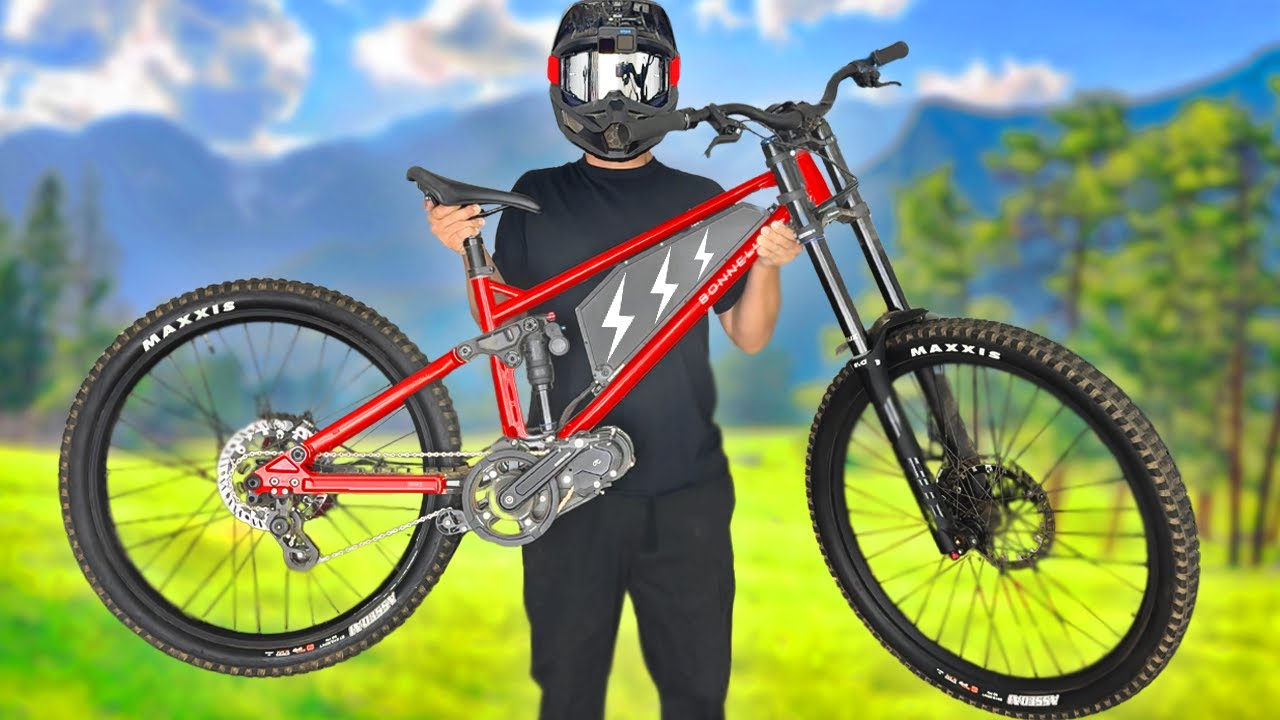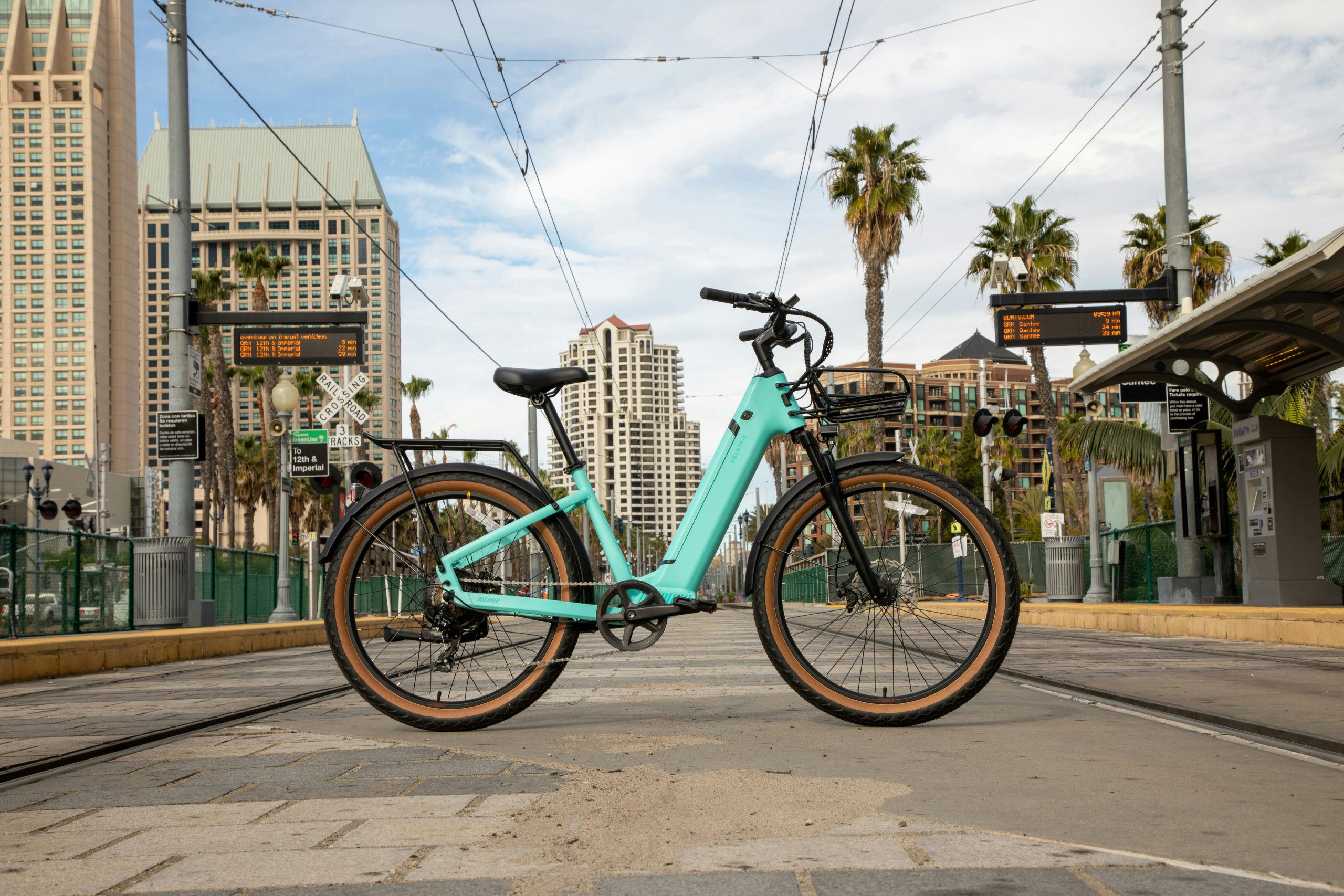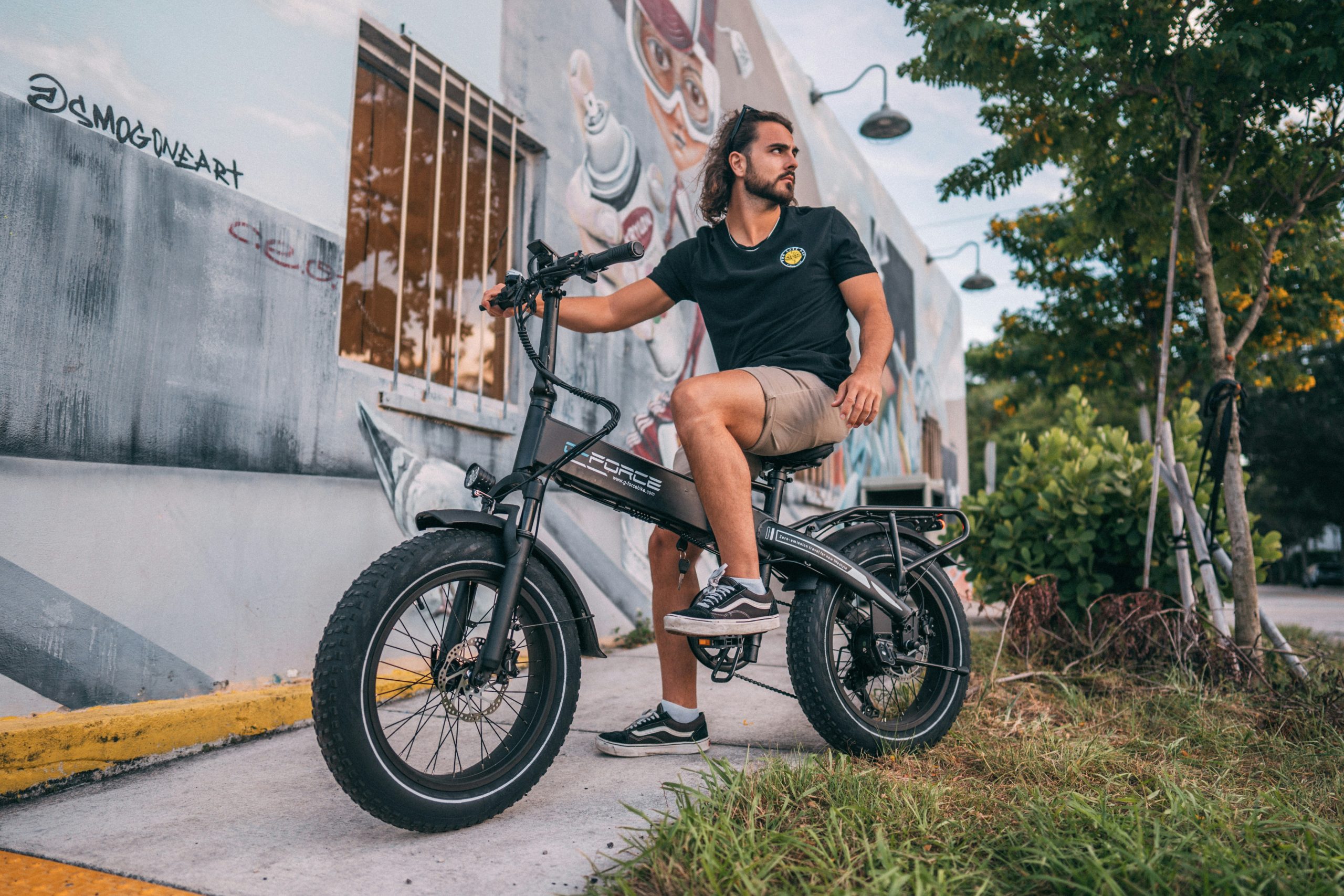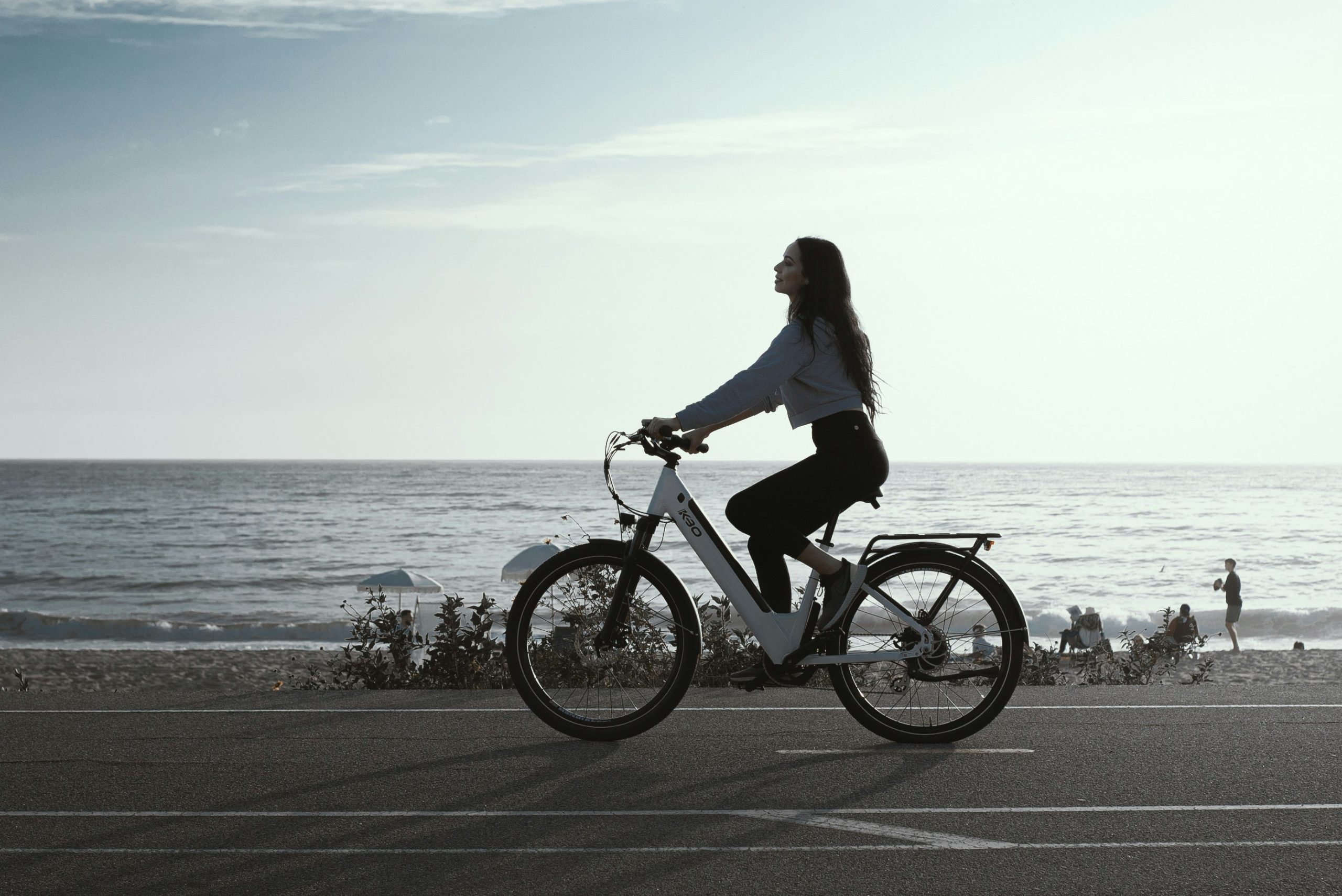You’re about to explore The Most Powerful Electric Bike and why it stands out among full-suspension eMTBs, with highlights from the Sur Ronster video. This piece will show key specs like the Bonnell 775 motor, full suspension setup, and mid-drive traits, and explain how those translate to speed, jumps, and trail performance.
You’ll get a clear outline comparing top speed, pedal assist modes, and class 2 vs class 3 street legality, plus how the bike stacks up against rivals like the Surron. By the end, you’ll know whether this electric mountain bike suits your trail, downhill, or street needs and what to watch for in weight, range, and licensing.

The Most Powerful Electric Bike — overview
You want to understand what people mean when they call an e-bike “the most powerful,” and whether that claim matters for what you ride, where you ride, and how you stay legal and safe. This article walks you through the concept, examines the Sur Ronster video that sparked a lot of interest, looks at the types of high-power e-bikes on the market, and clarifies what you should actually expect from a high-power electric mountain bike.
Concept and definition of “most powerful” in the e-bike context
“Most powerful” can mean different things depending on which metric you prioritize. For you, power could mean peak motor watts for acceleration, continuous watts for sustained climbing, torque for technical ascents, or simply top speed for downhill or street runs. Power also interacts with battery voltage/current, controller tuning, and drivetrain efficiency, so the headline number alone rarely tells the whole story. When you evaluate claims, look for peak and continuous power, torque, battery specs, and how the bike behaves in real-world riding — that combination defines practical power.
Summary of the Sur Ronster video and why it matters
The Sur Ronster video showcases an e-bike build that pushes the limits of motorcycle-style acceleration and trail capability on a pedaled, full-suspension platform. For you, the video matters because it demonstrates how far hobbyists and small builders can push eMTB platforms through motor swaps, high-voltage battery packs, and upgraded suspension and brakes. It highlights both the thrill and the trade-offs: huge torque and speed, but more weight, more heat, and legality questions. The video is a real-world case study in what “most powerful” can look and feel like off the shelf or with mods.
Types of electric bikes that claim high power: eMTB, downhill, street-legal
High-power claims usually come in three categories you should know: electric mountain bikes (eMTBs) designed for pedal assist on trails; electric downhill bikes focused on going fast and absorbing big impacts; and street-legal machines tuned to hit high assisted speeds while conforming to local laws. eMTBs aim to balance pedaling, range, and trail manners, downhill bikes prioritize suspension, strength, and braking, and street-legal high-power bikes focus on sustained speed, lighting, and safety equipment.
What riders expect from a high-power electric mountain bike
If you’re shopping for a high-power eMTB, you probably expect explosive climbs without popping your heart rate through the roof, confident descents at higher speeds, better ability to gap jumps and hit technical lines, and durability to handle repeated stress. You also want predictable pedal-assist modes, manageable weight distribution, reliable battery life for your ride length, and brakes that give you stopping authority when things get hairy.
Key specifications and headline performance figures
You need to read numbers critically. A few headline specs tell you a lot, but you must interpret them together to judge how an e-bike will behave in the real world.
Peak motor power and continuous power ratings
Peak power defines short bursts — launches, steep punchy climbs, and wheelies — but it’s usually delivered for seconds before thermal limits kick in. Continuous power is what the motor and controller can sustain for more prolonged climbs or long road runs without overheating. Powerful e-bikes often advertise peak figures in the multiple-kilowatt range (several thousand watts) while continuous ratings are lower. For your rides, continuous power often matters more for long climbs or sustained sprints.
Top speed figures and how they are achieved
Top speed is a product of motor power, gearbox or direct drive gearing, wheel circumference, battery voltage/current, and limiting settings in the controller or firmware. High-voltage systems and efficient gearing let a motor spin faster and sustain higher speeds; removing electronic speed limiters will raise top speed but can make the bike illegal on public roads. Remember that aerodynamic drag rises with the square of speed, so achieving higher top speed requires disproportionately more power.
Torque numbers and climbing performance
Torque, measured in newton-meters (Nm), determines how well you launch and climb steep, technical terrain. High torque helps you punch through roots, rocks, and loose surfaces without stalling. Torque is especially important in low-speed, high-load situations where RPM is low. Because torque multiplied by wheel radius and drive reduction equals wheel force, you’ll notice torque more than peak power on steep switchbacks.
Power-to-weight ratio and its effect on acceleration
Power-to-weight ratio (watts per kilogram or horsepower per pound) is a practical way to compare acceleration between bikes of different mass. A lighter bike with similar power accelerates quicker and feels more nimble. Conversely, a heavy bike with massive power may still feel sluggish in tight technical terrain even if it’s blistering fast in a straight line. For you, choosing the right power-to-weight balance depends on whether you value explosive sprints or agile trail handling.
Motor types and how they influence power delivery
Motor architecture sets the character of the ride. Different layouts change where power is felt, how torque builds, and how the bike handles sustained use.
Hub motors versus mid-drive motors for powerful e-bikes
Hub motors deliver power directly at the wheel and can be engineered for very high peak output with simpler drivetrains, but they add unsprung weight (if rear or front hub) and don’t benefit from the bike’s gears. Mid-drive motors sit at the crank and can leverage the bike’s gear range for better climbing efficiency and lower motor RPMs, which is effective for sustained climbs. For ultra-high-performance builds, you’ll see both approaches: hub motors for drag-like acceleration and mid-drives for efficient trail climbing and better weight balance.
Typical motor architectures used in high-power models
High-power e-bikes use robust brushless motors with large stators, improved cooling (forced air or heatsinks), and strong bearings. You’ll find outrunner and inrunner designs, multi-phase winding options with different KV (RPM per volt) ratings, and larger diameter rotors for torque. The motor’s design, combined with the controller’s current capacity, determines how aggressive the power delivery can be.
Bonnell 775 MX and Bonell 775 motor characteristics
The Bonnell 775 MX (sometimes spelled Bonell 775 in listings) is known among builders as a larger-format motor favored for modded e-bikes aiming for high torque and RPM. Characteristics you’ll commonly hear about include a bigger stator for higher continuous torque, robust shaft and bearings for durability under heavy loads, and compatibility with higher-voltage controllers. In practice, the 775-series offerings are chosen for their ability to handle higher current and for relatively straightforward mechanical integration into custom frames. When you evaluate a Bonnell 775 build, look at thermal performance and gearbox compatibility as much as raw numbers.
How motor controller settings change usable power
The controller is the brain that turns battery energy into usable torque and speed. Current limits, throttle scaling, soft-start settings, regen profiles, and thermal cutoffs all define what percentage of the motor’s theoretical power you can actually use. With the same motor, two different controllers can produce very different ride experiences: one might give abrupt, raw bursts while another offers smooth, sustained power. You can tune controllers for peak drama or thermal-conservative longevity depending on your priorities.
Battery capacity, voltage, and range considerations
Power without a battery is just promise. Your battery choice influences the power you can draw, how long you can ride, and how long the bike will last under hard use.
Battery size (Wh) and its relationship to power and range
Battery capacity in watt-hours (Wh) is the energy reservoir that defines potential range. Higher power draw reduces range proportionally: if you double power, you halve run time if the battery Wh remains the same. For you, a high-power e-bike typically needs a larger Wh pack to achieve practical ride lengths — otherwise you’ll have very short but explosive rides.
High-voltage packs and performance benefits
Higher-voltage packs (for example 72V or 96V systems compared to 48V or 52V) let motors and controllers produce more power without drawing excessive current, which reduces heat in wiring and components and can improve throttle responsiveness. Voltage increases are common upgrades for high-power builds because a system designed for higher voltage can provide more consistent top-end performance and better thermal efficiency.
Fast discharge rates and thermal management
Delivering the heavy current pulses that high-power motors want requires cells that can discharge rapidly (high C-rate). You’ll want quality cells and BMS that can handle high continuous and peak currents, plus thermal management for both battery and motor. Long downhill runs or repeated acceleration on trails generate heat that can reduce performance or damage components if cooling isn’t adequate.
Real-world range expectations for trail, downhill, and street use
Range varies dramatically by how you ride. Hard, torque-heavy trail riding with frequent climbs might give you a few dozen kilometers/miles on a large pack, while moderate pedal-assist on mixed terrain can double or triple that. Downhill-focused rides often use less battery per minute but are shorter overall, while sustained high-speed street use consumes energy rapidly. Plan your battery size to match your typical ride: aggressive trail day, shorter high-intensity runs, or long-distance assisted tours each demand different Wh budgets.

Frame, suspension and componentry for high-power use
When you increase power, you stress the chassis and components more. Choosing the right frame and parts is critical for safety and ride quality.
Full suspension eMTB frames designed for high torque loads
Full-suspension frames intended for high-power use have reinforced motor mounts, thicker downtubes, and beefed-up subframes to withstand the forces from high torque and heavier battery packs. Manufacturers tune linkage curves to manage pedal kickback and chain forces, and they often use materials and bracing that balance strength and weight.
Suspension travel and tuning for downhill and aggressive trail riding
High-power bikes used for aggressive trail or downhill typically have longer travel — 150–200mm or more — and tunable damping to soak up big hits while keeping the wheel planted under acceleration. You should expect to set up spring rates and compression/rebound to match the added weight and launch forces you’ll encounter with a powerful motor.
Strength and durability of frames and subframes under high stress
Repeated hard launches, roost, and heavy braking create fatigue points. Look for frames with reinforced shock mounts, replaceable hangers, and a warranty that covers high-stress use if you intend to push a lot. Some riders add gussets, upgraded swingarms, or aftermarket subframes to spread loads and avoid stress fractures.
Wheel, tyre and brake choices to handle extra speed and weight
Wheels and tyres must be robust: wider rims, stronger spokes, and tubeless-ready tyres with appropriate casing thickness help prevent pinch flats and handle higher cornering loads. Brakes should be oversized (200mm+ rotors, multi-piston calipers) and use high-temperature pads and plenty of reach. For you, investing in brakes and wheelset upgrades is as important as motor and battery increases.
Weight, balance and ride dynamics
Power changes riding dynamics, and weight distribution becomes a central concern when you upgunned your bike.
Trade-offs between battery/motor size and overall weight
Every extra Wh and every larger motor adds weight. You get more acceleration and potentially more top speed, but you may lose nimbleness and increase fatigue when lifting or carrying the bike. You need to decide where you draw the line between desirable power and manageable mass for the terrain you ride.
Center of gravity and handling on technical terrain
Keeping the center of gravity low and centered helps maintain traction, stability, and predictable handling. Batteries mounted low in the frame and motors that concentrate mass centrally will make the bike feel more neutral, whereas high-mounted packs or rear-heavy builds can make the bike squirrely in tight corners.
Lightweight options and best lightweight powerful e-bikes
If you want strong performance without massive weight, look for efficient motor setups, high-energy-density battery cells that maximize Wh per kg, and optimized frames that sacrifice some range for mass savings. There’s no single “best” lightweight powerful e-bike; the best choice depends on whether you accept smaller range for lighter handling.
How weight affects jumps, cornering and trail maneuverability
Added weight changes inertia — you’ll carry more speed into corners but you also need more braking force to scrub speed. For jumps, heavier bikes demand more commitment and stronger landings can stress frames and suspension. You should tune suspension, tyre pressure, and your technique to compensate.

Speed classes, street legality and licensing
If you ride where laws matter, you need to know the classes and how power and speed play into legal status.
Explanation of class 1, class 2 and class 3 e-bike definitions
In common frameworks, class 1 is pedal-assist only with motor assistance up to 20 mph (32 km/h); class 2 includes throttle up to 20 mph; class 3 is pedal-assist only with assistance up to 28 mph (45 km/h). Exact definitions and speed caps vary by jurisdiction, so you should confirm local rules.
How top speed and pedal-assist behavior affect legal classification
Top speed limits and whether a bike has throttle or only pedal-assist determine its legal class. If you modify a bike to exceed the class speed or add throttle where not allowed, you may reclassify it into a different regulatory category or make it illegal for certain paths and roads.
Fastest street-legal e-bike options and license requirements
The fastest street-legal e-bikes typically conform to class 3 standards (up to 28 mph) where allowed. Depending on local law, class 3 bikes may have age limits, helmet requirements, and may be prohibited from certain trails. Most places don’t require a motorcycle license for class 1–3, but rules vary — always check local regulations before you ride fast on public roads.
Modifications that can make a bike illegal and how to stay compliant
Removing speed limiters, installing motors or controllers that boost power beyond legal thresholds, or adding noncompliant lighting or mirrors can make a bike illegal for public use. To stay compliant, keep stock or certified components for public roads, understand your jurisdiction’s limits, and reserve extreme mods for private property or closed-course events.
Off-road and trail performance metrics
On trails, you measure a powerful e-bike by climbing, descending, and how usable that power is across long rides.
Climbing ability on steep grades and technical ascents
A high-power e-bike will help you climb steeper grades more easily, maintain momentum over loose or rocky sections, and allow you to attempt lines that would be physically exhausting on a conventional bike. However, traction and rider skill remain limiting factors; too much torque without traction control or soft throttle mapping can lead to wheel spin and loss of control.
Descending stability and braking from high speeds
High-speed descents require not just power but robust brakes, suspension that stays in control under repeated hits, and a frame that resists flex. A powerful motor won’t help you down a hill, but confident braking and stable geometry let you use the bike’s speed advantage without sacrificing safety.
Pedal-assist usability for long trail rides versus raw throttle power
Pedal-assist is typically more range-efficient and integrates better with technical riding because it scales power according to your pedaling. Raw throttle power is great for quick bursts and fun, but it’s less energy efficient and can leave you stranded if the battery depletes quickly. For trail riding where you value long days, prioritizing smart pedal-assist mapping is usually better.
Best e-bikes for mountain biking and downhill specific models
The best trail and downhill e-bikes combine purposeful motor mapping, durable chassis, long-travel suspension, and high-quality brakes. You’ll find purpose-built models from major manufacturers and tighter, lighter platforms like the Sur Ron family or specialized eMTBs from established bike brands. When choosing, focus on how the package matches your trail style: long rides, enduro stages, or pure downhill.

Comparison: Bonnell 775 MX versus Sur Ron and peers
If you’re evaluating raw motor swaps versus integrated platforms, this comparison helps you weigh trade-offs.
Direct spec comparison including motor, battery and weight
Compare a Bonnell 775 MX-based build to a Sur Ron-style platform by looking at motor type (aftermarket larger motor vs purpose-built OEM motor), battery voltage and Wh capacity, and total system weight. A Bonnell swap often delivers higher peak torque if paired with a stout battery and controller, but the installation may add weight and complicate cooling. Sur Ron and similar OEM platforms provide chassis-engineered solutions with balanced weight, integrated batteries, and tuned suspensions, which can be more reliable and easier to maintain.
Top speed, acceleration and real-world trail tests
In raw tests, a well-built Bonnell 775 MX system can produce jaw-dropping acceleration and higher top speeds in bursts, but heat and sustained performance depend on the supporting components. Sur Ron-style bikes typically deliver strong, repeatable performance with better overall ride integration, making them feel more balanced on real trails. For you, acceleration headlines are thrilling, but repeatability and rideability across a whole ride often matter more.
Ride characteristics: jumps, handling and suspension response
A purpose-built Sur Ron chassis usually has suspension and geometry tuned to the motor’s power envelope, so jumps, landings, and handling are predictable. A Bonnell swap on an otherwise stock frame can change mass distribution and stress suspension beyond its original intent, sometimes requiring significant upgrades to forks, shocks, and linkages to maintain safe, composed behavior.
Value, aftermarket support and class suitability between models
Aftermarket builds with a Bonnell motor can look like great value for power, but consider serviceability, parts availability, and legal standing. OEM platforms like Sur Ron often have manufacturer support, spare parts, and better initial legal compliance for certain uses. Choose based on whether you want a project and high customization, or a more turnkey, supported machine optimized for common use cases.
Conclusion
Summary of key factors that define the most powerful electric bike
The “most powerful” e-bike is defined by a mix of peak and continuous motor power, torque, battery voltage and capacity, controller capability, chassis strength, cooling, and how those elements are integrated. Power figures alone don’t guarantee a usable bike; sustained performance, handling, and component durability are equally important.
How to balance power, legality and practicality when choosing a bike
Balance your desire for raw power with realistic use: bigger motors need bigger batteries and better cooling, which add weight and cost. Consider where you’ll ride — trails, closed courses, or public roads — and what your local laws allow. Aim for a bike that gives you the power you need while staying legal, reliable, and comfortable to ride for the sessions you plan.
Final recommendations based on intended use and rider priorities
If you want explosive acceleration and are comfortable with custom builds and frequent maintenance, a high-current aftermarket motor like the Bonnell 775 family can deliver thrills. If you prefer a balanced, repeatable package with integrated support and better out-of-the-box trail manners, choose a purpose-built platform like Sur Ron or a premium eMTB from established brands. For long rides and trail days, prioritize battery Wh and efficient pedal-assist mapping. For short, extreme sessions, prioritize motor output and cooling.
Next steps: resources for deeper research and test riding
To finalize your decision, compare real-world tests, read rider reports on sustained performance and thermal behavior, and — if possible — test-ride candidates under conditions similar to your typical rides. Talk to builders about reliability, ask local shops about maintenance and legal requirements, and consider joining group rides or demo days so you can feel the difference between headline power and actual rideability. That hands-on experience is the best way to pick the most powerful e-bike that actually fits your riding life.
This is the most powerful electric mountain bike
Bonnell 775 MX
Key words: full suspension emtb best full suspension electric mountain bike best electric bike fastest electric mountain bike bonnell 775 mx bonell 775 best class 3 electric bike most powerful electric bike with pedals best electric pedal bike best ebike for trails best ebike for mountain biking best light weight electric bike mid drive electric full suspension downhill bike electric downhill bike bonnell 775mx vs surron bonnell 775 top speed jumps pedal assist ebike best pedal assist ebike best street legal ebike fastest street legal ebike no license best class 2 ebike best class 3 ebike


